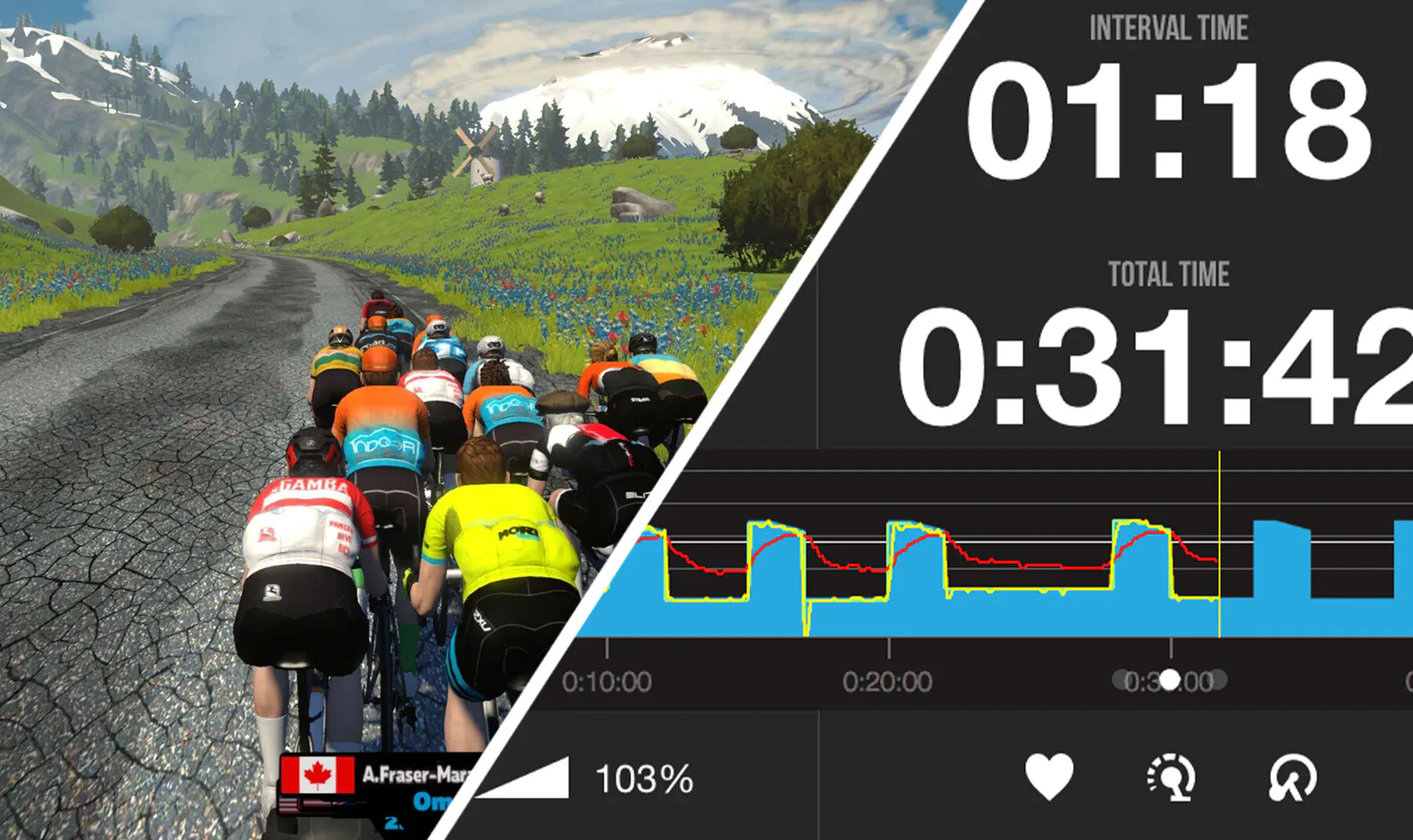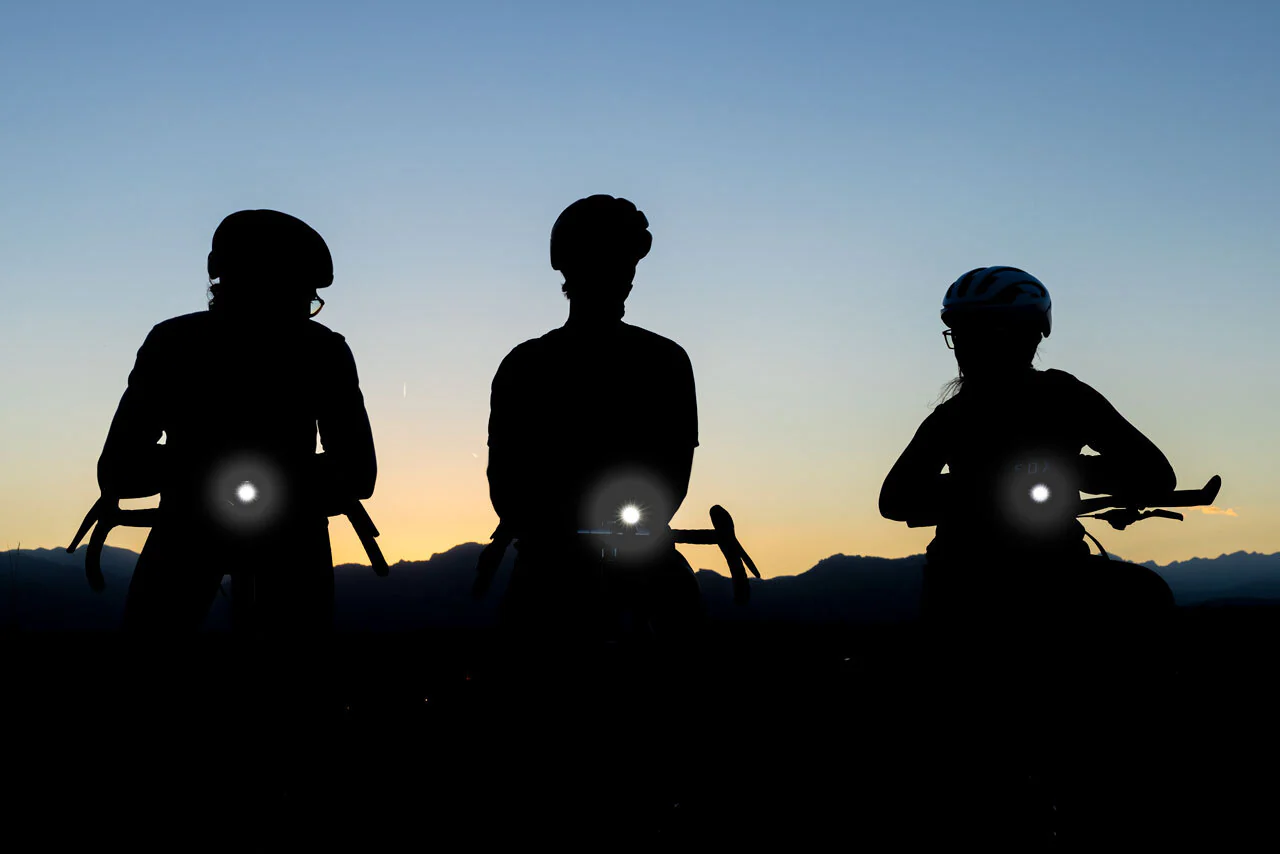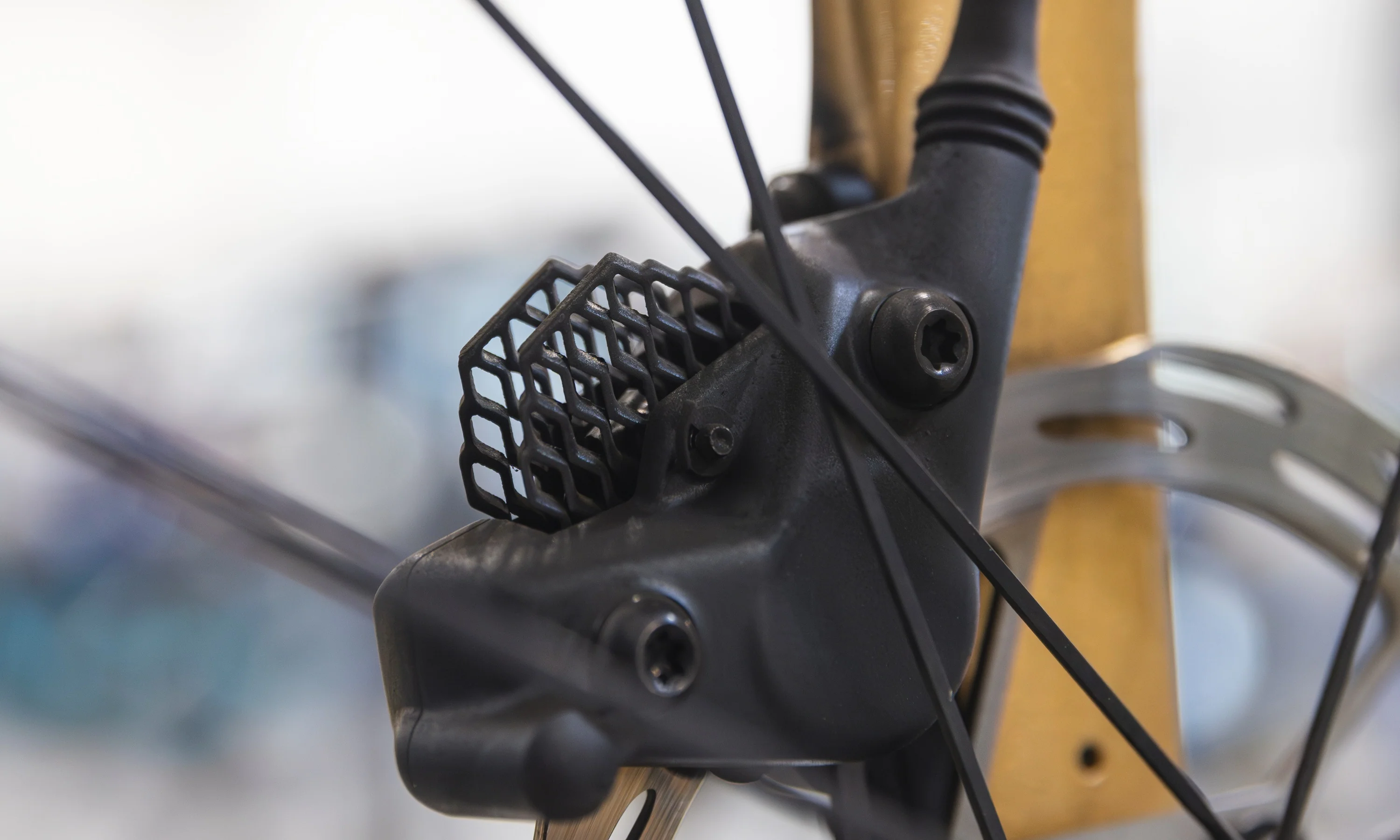If you live in a dry and temperate climate, consider yourself lucky. Your bike can chug along all year without you having to change anything. You can get by with some knee warmers and lights for those early sunsets and be perfectly content.
But for those of us blessed with winters that soak our clothes, freeze our fingers and toes, and cover our bikes with ice and grime, a bit more preparation is needed to survive the dark and cold months.
 Last year I tried commuting to work every day. This means I experienced a lot of bad weather on the bike. I had to buy a lot of new thermal winter riding clothes to survive. But it was a great experience. Toughing out the winter months can be good for you! I became stronger both physically and mentally, and felt more passionate than ever about cycling.
Last year I tried commuting to work every day. This means I experienced a lot of bad weather on the bike. I had to buy a lot of new thermal winter riding clothes to survive. But it was a great experience. Toughing out the winter months can be good for you! I became stronger both physically and mentally, and felt more passionate than ever about cycling.
The air of winter is never inviting, but even if your body and mind aren’t stoked for the wet and the cold, there’s no reason your bike can’t be. I had to keep up with bike maintenance and make a few adjustments to my bike to make it through the winter. If your bike is set up to properly, then there’s one less hurdle in the way of you getting out and riding. No matter the season, riding leads to happiness, and so does a healthy bike. Here’s what you need to do.
Keep your bike and drivetrain clean
People who live in cold and moist climates know that the roads are simply dirtier in the winter. Rain and snow attract all manners of grit and debris to road surfaces like magnets. Then when you ride, all of that junk likes to stick itself to your bike. The biggest key to keeping your bike healthy through a harsh winter is to clean it regularly.
Wash your bike just enough to keep grit from building up anywhere on your bike and damaging components or migrating into bearings. You don't need to blast the whole bike with a high pressure wash, in fact, that's probably just as bad as not washing your bike since high pressure water can force grit where it shouldn't go. Use gentle water pressure, a soft brush and mild soap if you need it, and try to avoid spraying sensitive areas like bearings directly. During the winter I keep a spray bottle in my garage and simply sprayed things down quickly when I get home each night.
Even if I didn't clean the whole bike, I'd always at least wipe dirt and grit off the chain and cogs. Your drivetrain is the most important thing you need to clean, so if you're only going to clean one thing, focus there. No one likes a bike that grinds or can't shift right due to accumulated grit. Keeping the drivetrain pristine will prevent premature and often expensive wear and tear. Ideally, clean and lube your chain after every wet or dirty ride. Heavier, wet chain lubes are often preferred in the winter as they last longer through rain and snow.
You don't need water or degreaser unless it's super gunked up. A firm wiping with a rag followed with a good lube will often be enough. Try to keep all the silver parts looking silver. It may seem tedious, but it will keep your bike running as it should and protect your investment for a long time.
Some especially fastidious riders may go so far as to wax their frames with automotive wax. Apply a thin layer and buff it off with a soft cloth. This keeps dirt and grit from sticking to your bike’s paint, which can dull or damage it. Usually, this only needs to be done once or twice during the season, as a single coat will last months.
Personally, I just use Pedro's Bike Lust. Spray it directly on your clean frame or a clean microfiber cloth and wipe. It shines things up and leaves a protective coating. Easy! Keep it all clean, change your cables and housing in the spring if they're feeling sticky, and your bike will continue to run like new for years to come.
Winter bike tires
Wet winter roads attract debris, and that means more flat tires. We've only had one snow storm so far and already the sides of the road are covered in gravel, glass, and who knows what else. It’s probably one of the worst things a cyclist can experience, being cold and wet, shivering at the side of the road, struggling to replace a tube with frozen fingers.
Of course, the best course of action is to not flat in the first place. As riders, we’re not always in control of that, but we can choose tires that help minimize the risk of flatting during the winter months.
For most riders, winter is a time for base miles, and just getting outside whenever the weather relents enough to allow it. So ditch the racey lightweight tires in favor of heavier, more durable, puncture resistant tires. A couple of the most popular options in this category are the Continental Gatorskin and the Schwalbe Durano, but most brands produce similar puncture resistant tires that can serve you well. When spring finally returns you’ll feel like a rocket on lightweight tires after a full winter of riding on beefy rubber.

It will also be beneficial to fit the widest tires your frame is capable of fitting. For most modern road bikes, this means tires in the 25-28c range. Some endurance models can even accommodate tires above 32c. If you have a gravel bike that can accommodate big, fat rubber, even better! A wider tire generally resists damage from rough roads better than skinny tires. It's easier to repair punctures with tools like tire plugs and patches. Most importantly, it also gives you a larger contact patch and allows you to run lower pressures, giving you more grip and confidence when road conditions are slick.
If you live someplace with snow regularly covering the roads, then you need to take tire choice a step further. Ideally, you’ll have a bike that can fit larger knobby cyclocross or gravel tires to give you extra traction. In extreme cases with lots of ice, studded tires are really the only way to get traction. If you’re restricted in the tire department, then it may be time to seek a more winter specific bike (see below).
Winter Wheels
Check out our Road Wheel Collection.
If there’s something other than drivetrains that winter grit likes to destroy, it’s brake tracks and hub bearings on wheels. If your road bike is equipped with nice carbon rims, then spare them by getting a set of alloy training wheels. If you have a nice set of alloy wheels already, it still may be worth it to switch wheels if you’re worried about causing premature wear to your primary wheels.
Some savvy riders will even use this as an excuse to invest in nice wheels and save their original stock wheels as their winter set. Not only will you preserve your nice rims for the summer months, but if you’re switching between carbon brake tracks and alloy brake tracks, the alloy will stop significantly better in wet conditions.

If your bicycle comes equipped with disc brakes, then wear to the braking surfaces becomes almost a non-issue. You can happily run your carbon wheels all year round without worrying about wearing down the rim. Still, it may be worth keeping that spare set on hand if you're concerned about preserving the hubs and the finish. In general, the best wheels for riding in winter are cheap and expendable. This is where searching the used marketplace really comes in handy. There are always plenty of dependable, low-cost options if you're willing to look.
Winter brake pads
Winter grit loves destroying brake tracks, and in turn, eating up brake pads as well. Because they’re essential for your safety, be sure to check your pads before each ride to make sure they haven’t been completely worn down. If you're concerned about braking power, consider swapping brake pads to a compound with more bite. Some brake pad manufacturers produce pads that are specially designed to provide improved braking in wet conditions. The most popular of these is the Kool Stop Salmon pad, but there are many others.
If your bike is equipped with disc brakes, pad choice is still important to consider. Some disc brakes will come with organic brake pads installed. These are sometimes referred to as resin or semi-metallic pads. They can be preferable for some riders because they are quieter, i.e. they don’t squeal as much, and they have a stronger feeling initial bite. Organic pads, however, degrade quickly in wet and gritty conditions. This is why sintered pads, also known as metal sintered or full metallic pads, are the better option.

Sintered pads will stay consistent through wetness, mud, and all sorts of grit and crap. They will likely squeal much more once they get wet but all you can do is accept and embrace it. Brake squeal is part of winter riding, and a small price to pay for performance and safety.
Get some fenders
For many riders, fenders (or "mud guards" as non-Americans say) may be the least sexy thing that you could add to the lines of a beautiful road bike. But in winter they serve an important purpose. Rear fenders keep dirt and spray from soaking your backside while font fenders help protect your feet and drivetrain from spray coming off the front wheel. Overall, both you and your bike will be dryer and happier, and so will anyone following behind you.

The above photo isn't the best example (I've bought new fenders since), but a few brands like SKS make sleek, clip-on fenders that aren’t as dorky looking as the thick plastic paddle-like fenders of yesteryear. In the last few winters I've made good use of my SKS Raceblades, S-board and S-Blade, and Speedrocker clip-on fenders on my road and gravel bikes.
If you want the ultimate in protection from spray, then you’ll need classic full coverage fenders which require specialized fender mounts on your frame and fork. If you don’t have those, then clip-on fenders are your only option.
If you absolutely cannot bring yourself to clip a set of fenders onto your bike, then something simple like an Ass Saver, a small, unobtrusive plastic fender that mounts under your saddle, can be enough to at least keep your butt dry while still looking pro.
A dedicated winter bike
Check out our Road Bike Collection.
Let’s say you simply don’t want to subject your beautiful, beloved bike to the harshness of winter. Perhaps your current bike is simply too fairweather focused, and you want something that has all the best battle gear. This is why many serious cyclists will actually have a second bike to use as a dedicated winter or wet weather bike. These bikes can range from beaters to purpose-built winter beating machines.
 If you just need a winter beater, it doesn’t necessarily mean you need a bike that’s a piece of junk. A good winter beater is simply a bike that you don’t have a particularly strong emotional or financial attachment to. It just needs to function well and keep you going. Used, older model road bikes are great options for a winter bike. It doesn't need to be the latest and greatest. It just needs to be properly taken care of, and it can keep you riding winter after winter.
If you just need a winter beater, it doesn’t necessarily mean you need a bike that’s a piece of junk. A good winter beater is simply a bike that you don’t have a particularly strong emotional or financial attachment to. It just needs to function well and keep you going. Used, older model road bikes are great options for a winter bike. It doesn't need to be the latest and greatest. It just needs to be properly taken care of, and it can keep you riding winter after winter.
If your goal is to ride through the worst mother nature can throw at you, then a more specialized bike is probably more what you’re looking for. This can mean cyclocross, gravel, or touring bikes capable of mounting wide, knobby, and maybe even studded tires and full coverage fenders. A mountain bike or fat bike might also open up many more riding possibilities. If you don’t want anything to keep you off a bike, then winter is a great reason to look for your next N+1.
Even if you don't (or can't) get a second bike, anything you can do to help to get out and enjoy a ride is great. So get your bike sorted, kit up, and go. Winter won't last forever, but your memories of braving the cold and the wet just might. Ride on.
Are you a winter warrior? Do you venture outside when other riders hang up their bikes? What did I miss? How do you keep riding outside when the weather is at its worst? Let us know in the comments!

























